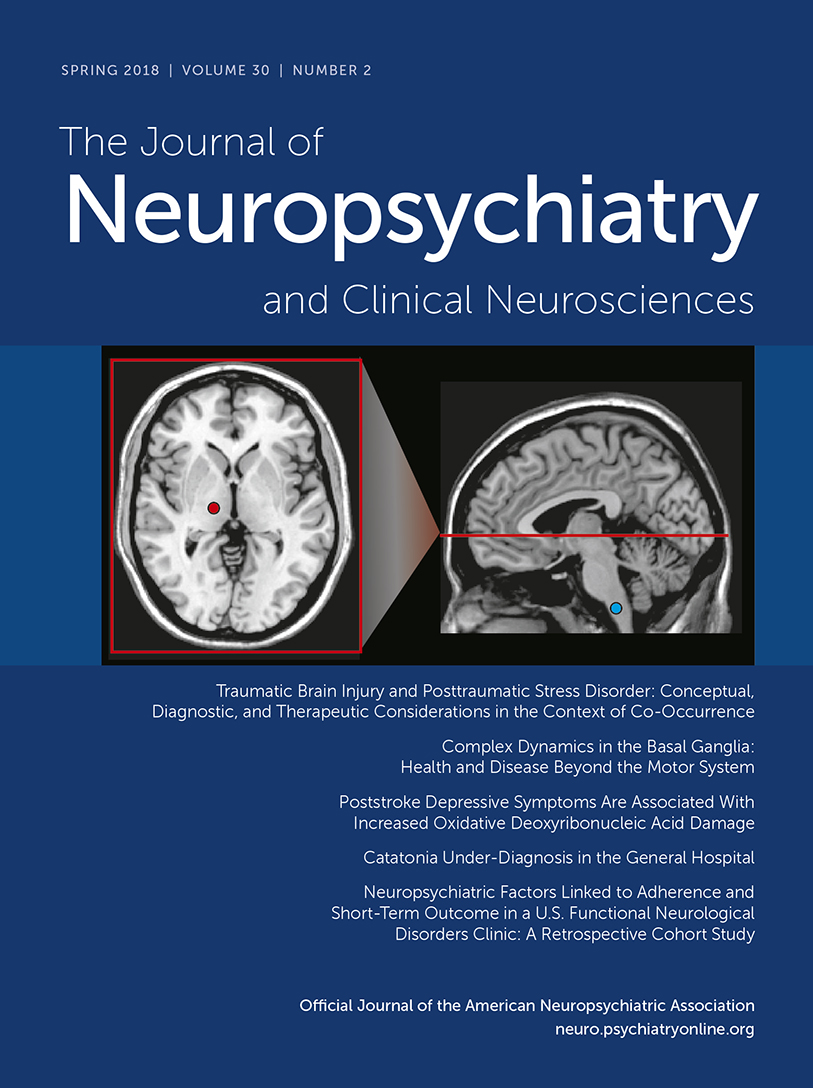Poststroke Depressive Symptoms Are Associated With Increased Oxidative Deoxyribonucleic Acid Damage
Abstract
Poststroke depression is independently associated with poor health outcomes, such as increased mortality, disability, anxiety, and lower quality of life. Identifying the potential biomarkers and detailed mechanisms of poststroke depression may improve the effectiveness of therapeutic intervention. In this cross-sectional study, the authors recruited patients with subacute ischemic stroke who were consecutively admitted for neurorehabilitation. Depression was assessed with the Patient Health Questionnaire–9 (PHQ-9), with a cutoff based on a summed-items score of 10. Polysomnography and laboratory tests for oxidative stress and inflammation were arranged. In total, 139 patients (97 men [69.8%] and 42 women [30.2%]; mean age: 63.2 years [±13.4]) with recent ischemic stroke were recruited and divided into two groups based on their depressive symptoms. Body mass index (BMI), the Barthel Index, percentage of antidepressant usage, and percentage of rapid eye movement (REM) sleep differed significantly between the two groups. The PHQ-9 score was significantly correlated with the levels of total antioxidant capacity, C-reactive protein, and urinary 8-hydroxy-2′-deoxyguanosine (8-OHdG). Urinary 8-OHdG, a marker of oxidative stress to DNA, remained significantly and positively correlated with PHQ-9 scores after adjusting for BMI, sleep-onset latency, Barthel Index, mean oxyhemoglobin saturation, age, antidepressant usage, and percentage of REM sleep by using multivariate linear regression. Depressive symptoms were related to increased oxidative DNA damage in patients with subacute ischemic stroke. Urinary 8-OHdG may serve as a potential biomarker for poststroke depression. Further longitudinal studies are needed to elucidate the causal relationship between poststroke depression and elevated oxidative stress level.



